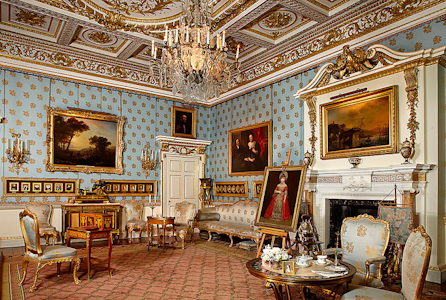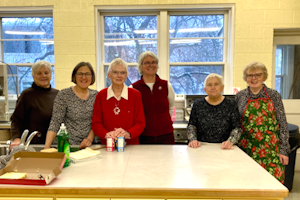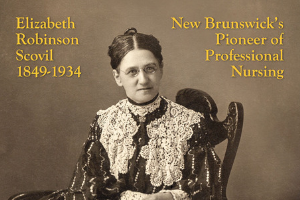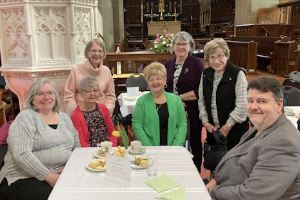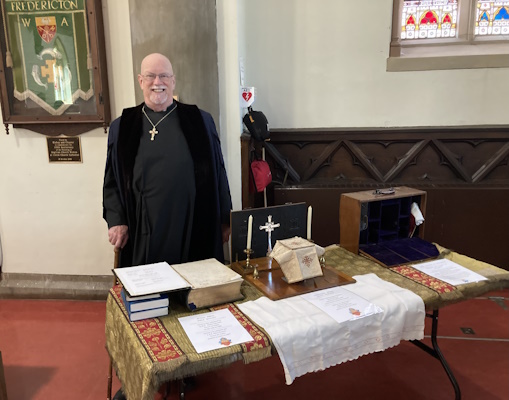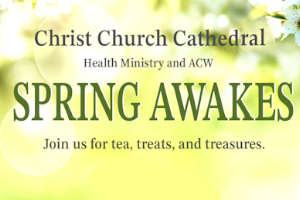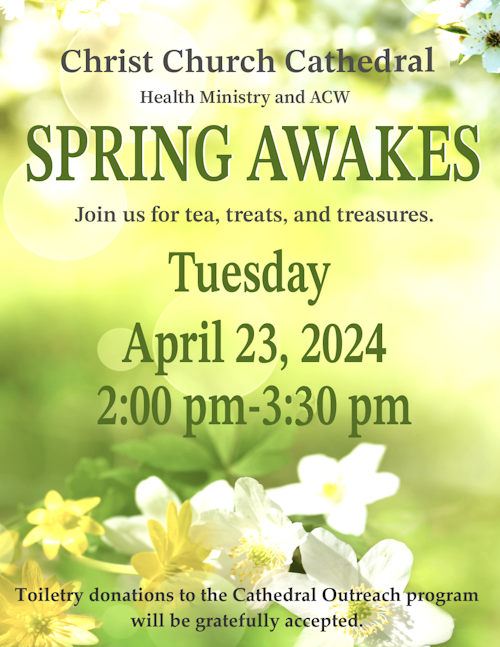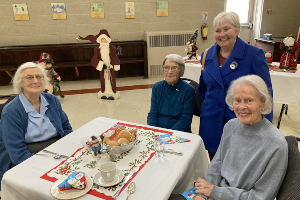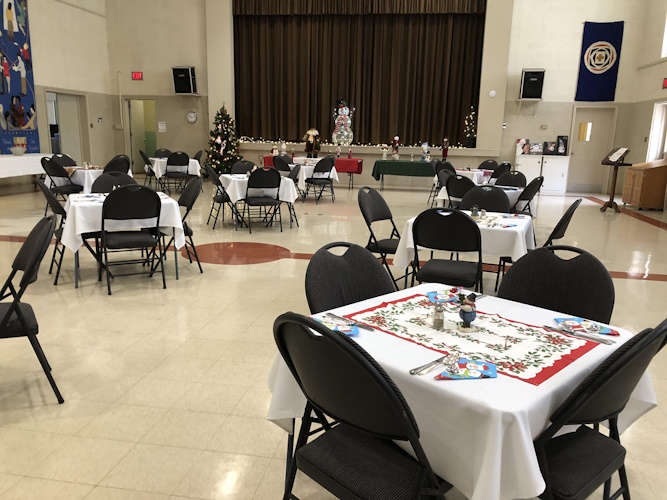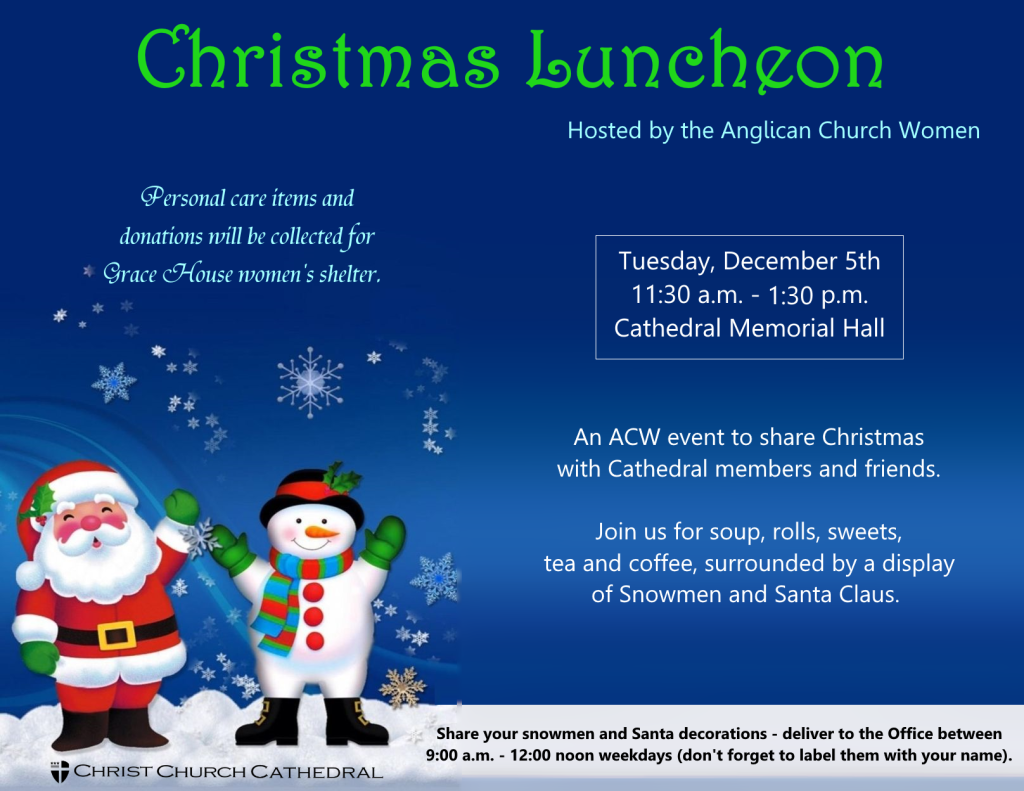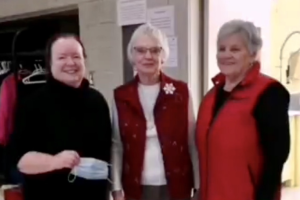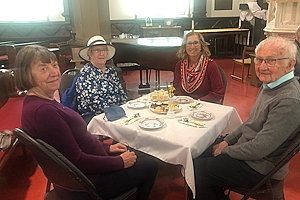 On 06 May, the Cathedral was the setting for a lovely afternoon Tea prepared, hosted and served by ACW and Health Ministry members. Ten tables were set and elegantly adorned with spring-like flowers and soft pastel colored napkins. Delicate sandwiches (crustless, of course) and mouth-watering sweets accompanied by bottomless cups of freshly brewed tea were on offer. And the offer was taken up by approximately 40 people. Gentlemen and ladies alike.
On 06 May, the Cathedral was the setting for a lovely afternoon Tea prepared, hosted and served by ACW and Health Ministry members. Ten tables were set and elegantly adorned with spring-like flowers and soft pastel colored napkins. Delicate sandwiches (crustless, of course) and mouth-watering sweets accompanied by bottomless cups of freshly brewed tea were on offer. And the offer was taken up by approximately 40 people. Gentlemen and ladies alike.
We have all heard of “high tea” and “afternoon tea” and probably all recognize both as typically British customs. Indeed, a little excursion into Google will tell you that we have the very British Anna, the Duchess of Bedford to thank for coming up with the idea of “afternoon tea” sometime in the 19th century. Whereas we now tend to view it as a special and often quite elaborate treat, for the peckish Duchess it started out as simply a snack between meals. She would request tea accompanied by finger sandwiches, scones with clotted cream and cakes just for her. No simple apple or peanut butter sandwich to tide Anna over!
Anna so enjoyed her afternoon snacks that she soon began inviting her friends and relatives to join her and as news spread of these afternoon occasions (which sometimes included entertainment), others started hosting their own tea parties and before they knew it, the entire country was on to Anna’s invention and a tradition was born.
So what distinguishes “afternoon tea” from “high tea”? Well believe it or not, it seems to have been the type of chair one sits in, along with one’s class. Anna’s wealthy friends and relatives dined seated on low, comfortable and well-padded chairs and sofas. Whilst the working class folks whose jobs didn’t allow for a lengthy afternoon tea, such as enjoyed by the Royals and rich, took their tea after 5:00 pm and sitting in high backed chairs (no doubt not well-padded) and high tables. Thus was born “high tea”! Needless to say, it isn’t only the chairs that differentiate the two. Crustless sandwiches and delicate sweets weren’t exactly the nectar of working class men and women. “High tea” is what is now known as supper or dinner and is the substantial evening meal. Although some folks in Britain still refer to that meal as “tea”, the use of the word high has largely been dropped.
What hasn’t changed, is the appeal of an afternoon tea! It’s an opportunity to slow down and savour a cup of tea and delicious finger food whilst enjoying the company of new and old friends in perhaps much the same way that Anna did. It’s a treat in this busy life allowing us to put our lives on hold and just relax. It can also be an opportunity to celebrate a special occasion.
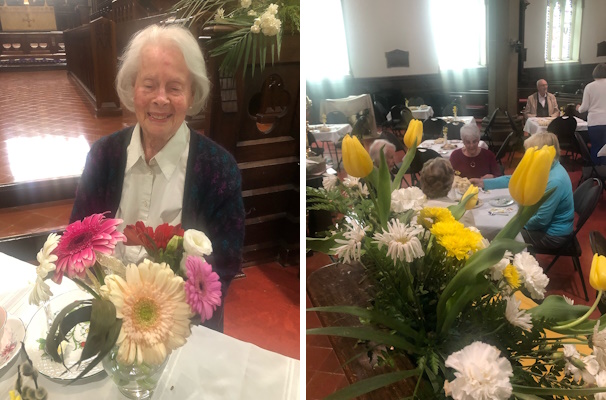
A special thank you to our verger and historian, Hank Williams, for putting together a special selection of historical pieces and being on hand to answer questions. These pieces and the accompanying write-ups were quite extraordinary.
Many thanks to all involved in making this such a lovely occasion, and thanks to Duchess Anna for her tendency to be peckish in the afternoon!
- by Gail MacGillivray
